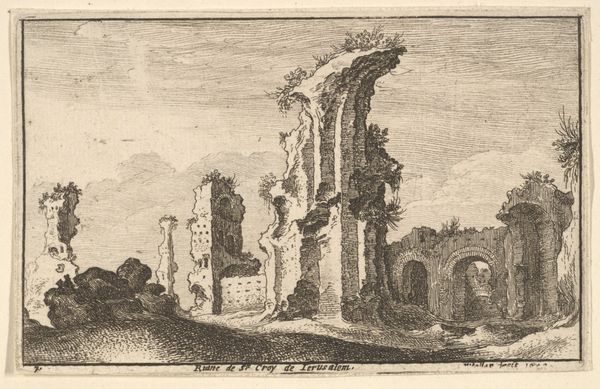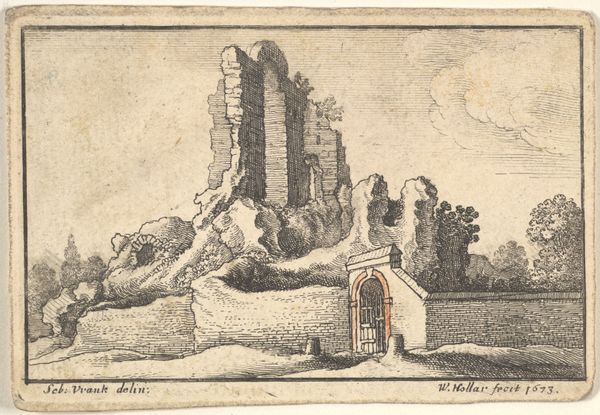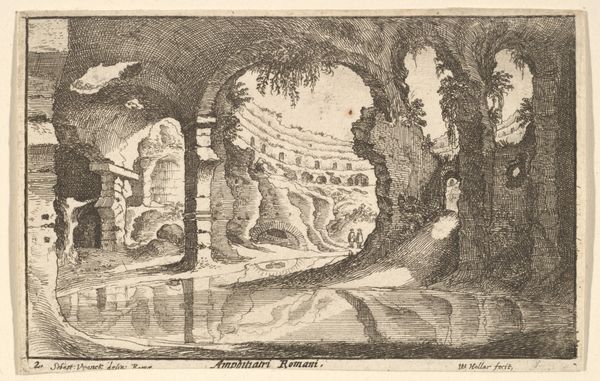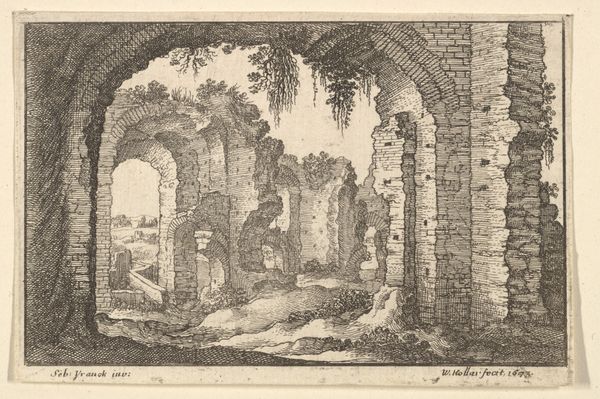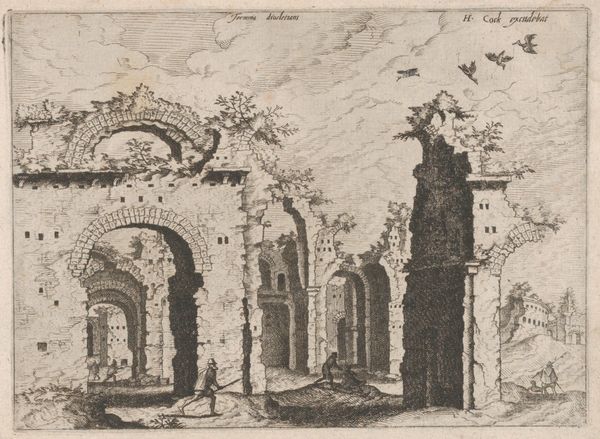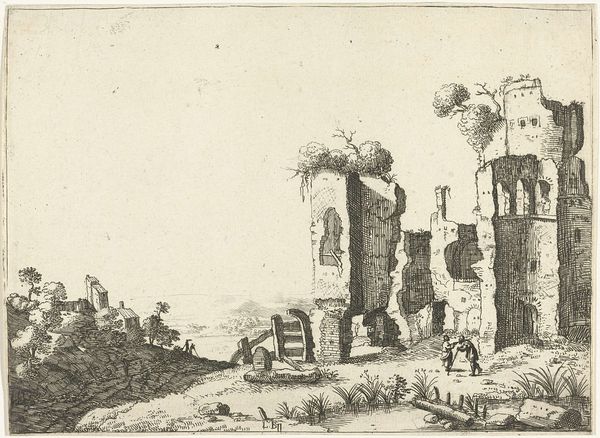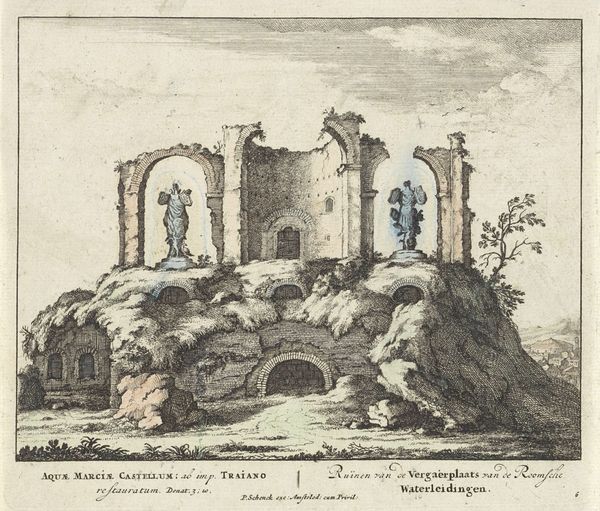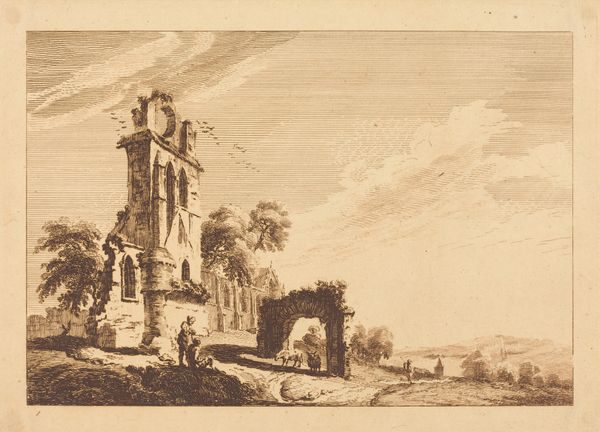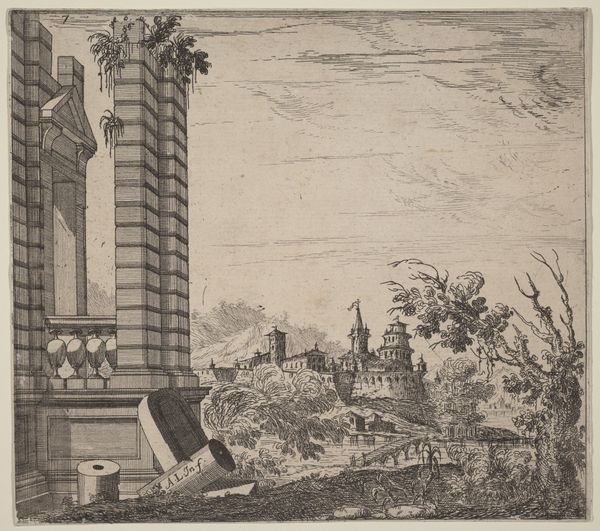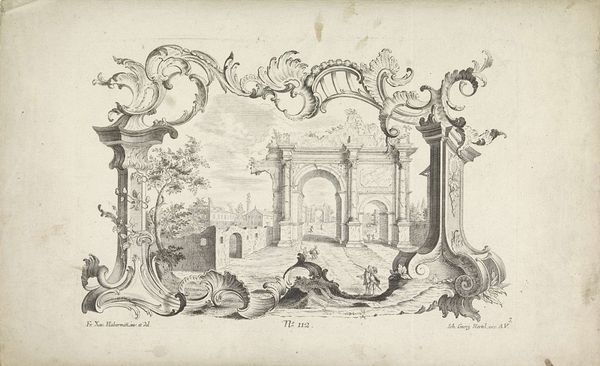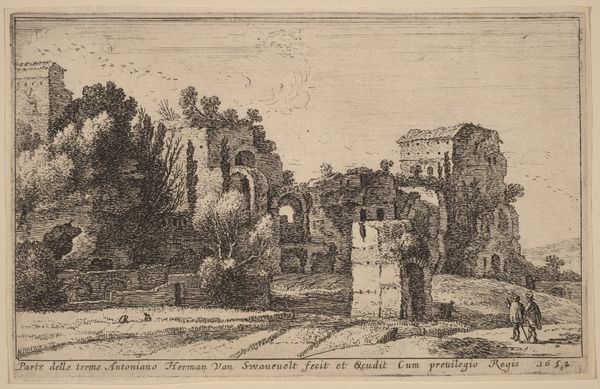
drawing, print, etching
#
drawing
#
baroque
# print
#
etching
#
landscape
#
cityscape
Dimensions: Sheet (trimmed to plateline): 2 3/4 × 4 3/16 in. (6.9 × 10.6 cm)
Copyright: Public Domain
Curator: Here we have "Palati maioris (Palatine Palace, Rome)" etched by Wenceslaus Hollar around 1650. Editor: Wow, it's melancholic, like staring at a ghostly memory etched onto paper. The ruins are beautifully rendered, even in decay, rising from a meticulously drawn landscape. Curator: Hollar really captures a sense of grandeur lost. He was quite the prolific printmaker, known for his detailed cityscapes and landscapes during the Baroque era. Editor: The archways! They’re almost like eyes gazing into a vanished past, and it also echoes a sense of human aspiration. What once was solid and imposing now frames nothingness. Curator: Right. He seems fascinated with the transience of power, the way nature reclaims what humans build. There's definitely an emotional weight to the ruins he chooses to depict. Editor: Absolutely! I feel like it also reveals this collective consciousness and maybe almost a warning. Buildings symbolize control and civilization, and in ruins we reflect our vulnerabilities. Curator: The plants sprouting from the stonework serve to enhance that sense of cyclical return. It's as if they’re breathing life back into something that history has left behind. Editor: The landscape surrounding the ruins almost highlights them; notice how the textures contrast. Those delicate etching lines show how everything comes full circle in the grand sweep of history. Curator: That’s a brilliant point. He frames the Palace not just as a historical artifact but as an essential reflection. Editor: Seeing ruins always prompts that human drive to leave your mark on the world and it really is, in the end, almost always temporary. What do you think, how do we reconcile it? Curator: We have to remember, it’s about the dialogue we have with those echoes, not necessarily the solidity of stone. We build, we create, but the stories outlast everything. Editor: That’s it; thank you for capturing the ephemeral yet enduring story. Curator: The pleasure was all mine.
Comments
No comments
Be the first to comment and join the conversation on the ultimate creative platform.
